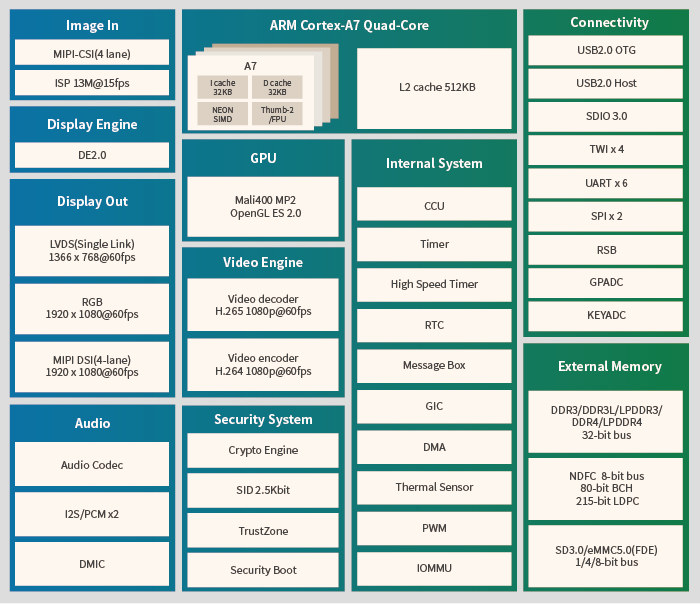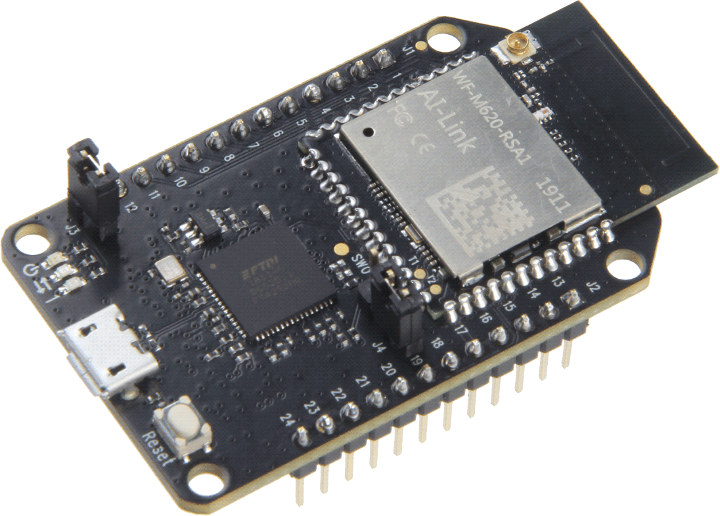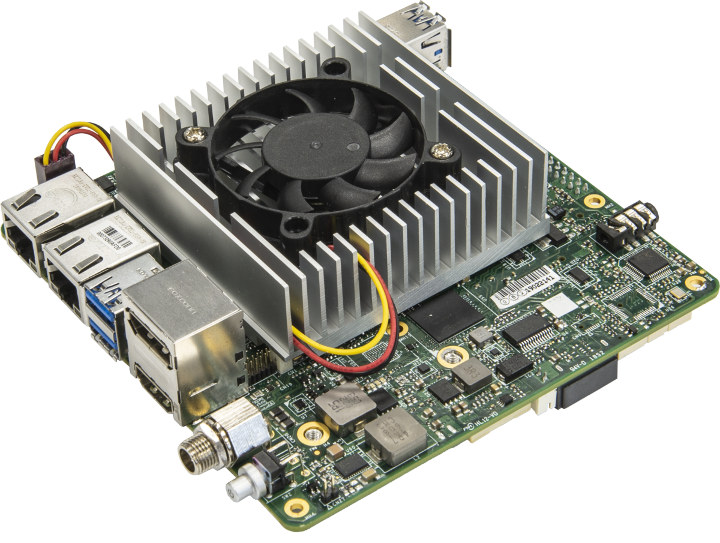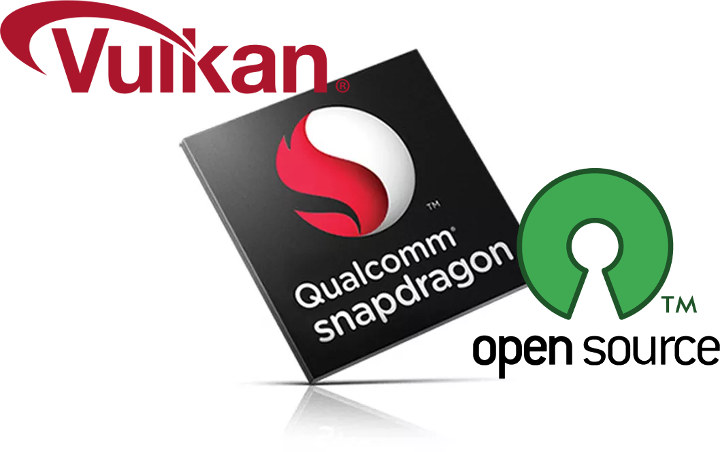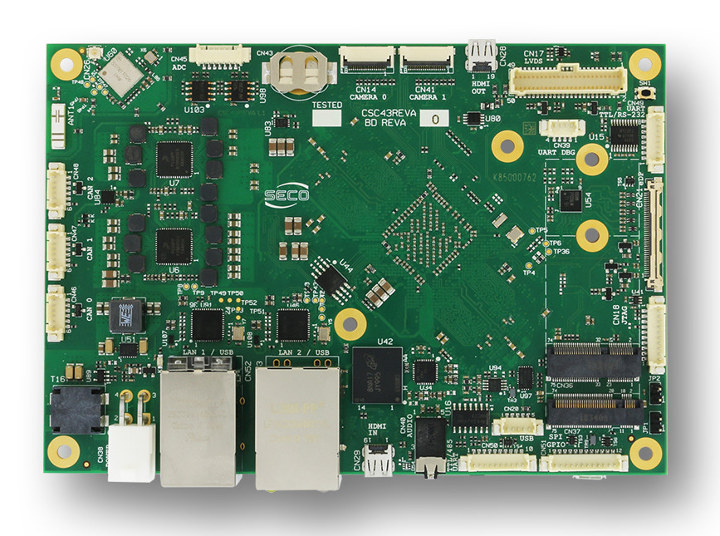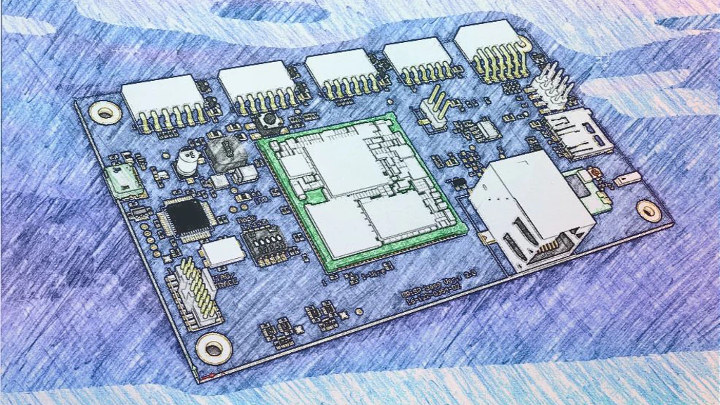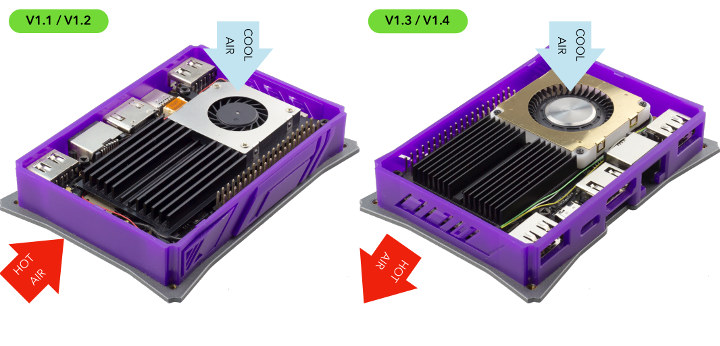It’s been a while since I’ve seen a new processor from Allwinner, so today I got curious and visited the company website hoping to find maybe some news about the first Cortex-A7x processor from the company. But instead I found something else intriguing with the new Allwinner MR133 processor specifically designed for “SLAM/VSLAM intelligent robot sweeper solutions”. In other words, Allwinner has just launched a processor for robot vacuum cleaners… Allwinner MR133 key features and specifications: CPU – Quad-core Arm Cortex-A7 processor @ 1.8GHz with 32KB L1 I-cache + 32KB L1 D-cache per core, 512KB L2 cache, low-power CoolFlex power management architecture GPU – Arm Mali 400MP2 with support for OpenGL ES 2.0/1.1, Direct3D 11.1, OpenVG 1.1 Memory I/F – 32-bit DDR4/DDR3/DDR3L/LPDDR3/LPDDR4 Storage I/F – eMMC 5.0 flasj, compatible with eMMC 5.1, support Full Disk Encryption(FDE) 8-bit TLC/MLC/SLC/EF NAND flash, supports FDE LDPC/80-bit BCH/1024bytes Video Engine – H264 HP encoder […]
MT3620 Mini Dev Board is a Cheaper Microsoft Azure Sphere Board
Announced nearly one year ago, Microsoft Azure Sphere is an ecosystem comprised of Azure MCUs with Microsoft Pluton Security System, Linux based Azure Sphere OS, and a secure cloud service called Azure Sphere Security Service. The first official Azure development board – MT3620 Development Board for Azure Sphere – was launched last year for $84.95. The kit may not have attracted a large number of developers, so there’s now a cheaper version – MT3620 Mini Dev board – going for $34.90 on Seeed Studio. Note that’s a pre-order and shipping is scheduled for May 13, 2019. MT3620 Mini dev board specifications: CPU Module – AI-Link WF-M620-RSA1 module with Mediatek MT3620AN single core Arm Cortex-A7 processor @ 500 MHz with 4MB SRAM, dual core Arm Cortex-M4F real-time core @ 200 MHz with 64KB RAM, Pluton security sub-system, and WiFi. Storage – 2x 8MB dual channel quad SPI (TBC) Connectivity – Dual band […]
UP Xtreme Board to Feature Intel Whiskey Lake Processor
AAEON launched their UP board family back in 2015 with the original board featuring an Atom X5 Cherry Trail processor. Since then they’ve launched other models all based on processors with 10W or lower TDP (Thermal Design Power) such as UP Squared Apollo Lake development board. But the company has now upped the ante by going with Intel Core-U series Whiskey Lake processors (15W TDP) in their upcoming UP Xtreme single board computer (SBC) that will feature some of those Core i3/i5/i7 processors. UP Xtreme specifications: SoC- Intel Dual/Quad Core “Whiskey Lake” Core i3/i5/i7 processor @ 1.8 GHz (Boost frequnecy up to 3.9GHz for i3/i5, up to 4.6 GHz for i7) with Intel UHD graphics 620; 15W TDP System Memory – Up to 16GB dual-channel DDR4 memory (soldered on-board) Storage – 16GB to 128GB eMMC 5.1 flash, 1x SATA connector with power connector Video Output 1x eDP with backlight control […]
Turnip is an Open Source Vulkan Driver for Adreno GPU
Qualcomm Adreno GPUs have one of the best open source GPU driver for Arm SoC thanks to Freedreno driver. The driver relies on OpenGL ES API however, and nearly four of years ago, Khronos introduced the Vulkan API that aims to reduce CPU resources usage, and adds support multiple command buffers. The good news is there has been development of a Vulkan driver for Adreno 500 and 600 series GPU called Turnip, also referred to as Freedreno_vk (Freedreno Vulkan) in the code. The Turnip driver has been developed by Bas Nieuwenhuizen, a Site Reliability Engineer at Google who also happens to be RADV (Radeon Vulkan) lead developer, Chia-I Wu, a Google software engineer working on Android graphics, Chad Versace, Intel’s software engineer working on Linux OpenGL stack, and others as revealed by a recent merge into Mesa 19.1 slated to be released next quarter. Via Phoronix Jean-Luc Aufranc (CNXSoft)Jean-Luc started […]
Seco SBC-C43 SBC Features NXP i.MX 8 QuadMax Processor, 8GB RAM
When NXP unveiled their first 64-bit i.MX processors in 2016, we had three families: i.MX 8 Cortex-A72/A53 for high performance, i.MX 8M Cortex-A53 for audio/video application, and i.MX 8X Cortex-A53 for low power applications. Most of the designs we’ve seen so far are based on i.MX 8M family, and we’ve seen few hardware platforms based on the top of the line i.MX 8 QuadMax SoC with two Arm Cortex-A72 cores, four Cortex-A53 cores, two Cortex-M4F real-time cores, and two GC7000XS/VX GPUs. We did cover several modules based on i.MX 8 QuadMax processor including Advantech ROM-7720 Qseven 2.1 Computer-on-Module, Toradex Apalis i.MX 8 CoM, and Congatec conga-SMX8 SMARC 2.0 SoM among others, but AFAICR I had yet to see an i.MX 8 QuadMax single board computer. So Seco SBC-C43 appears to be the first SBC powered by NXP’s most powerful i.MX 8 processor, coupled with up to 8GB DDR4, 32GB eMMC […]
GRiSP 2 Board Targets Embedded Erlang & Elixir Development (Crowdfunding)
Erlang is described as a programming language used to build massively scalable soft real-time systems with requirements on high availability, and used in telecoms, banking, e-commerce, computer telephony and instant messaging. Elixir is a dynamic, functional language designed for building scalable and maintainable applications that leverages the Erlang VM, known for running low-latency, distributed and fault-tolerant systems. Elixir is used in many types of applications from higher-level web development to the embedded software domain, and Peer Stritzinger designed GRiSP board especially for the latter in 2017. He’s now back with GRiSP 2 featuring an NXP i.MX 6ULL SoM running Linux and RTEMS (Real-Time Executive for Multiprocessor Systems) RTOS. GRiSP 2 board is comprised of a system-on-module and baseboard with the following specifications: System on Module SoC – NXP iMX6UL Arm Cortex-A7 @ 696 MHz, 128 KB L2 cache, with TRNG, Crypto Engine (AES/TDES/SHA), Secure Boot Memory – 128 MB DDR3 […]
FOSSASIA 2019 Schedule – March 14-17
As its name implies, FOSSASIA is a Free and Open Source Software event taking place every year in Asia, more specifically in Singapore. I first discovered it last year, and published a virtual FOSSASIA 2018 schedule last year to give an idea about the subjects discussed at the event. It turns out FOSSASIA 2019 is coming really soon, as in tomorrow, so I’m a bit late, but I’ll still had a look at the schedule and made my own for the 4-day event. Thursday – March 14, 2019 10:05 – 10:25 – For Your Eyes Only: Betrusted & the Case for Trusted I/O by Bunnie Huang, CTO Chibitronics Security vulnerabilities are almost a fact of life. This is why system vendors are increasingly relying on physically separate chips to handle sensitive data. Unfortunately, private keys are not the same as your private matters. Exploits on your local device still have […]
Khadas VIM2 v1.4 SBC Gets Bluetooth 5, Thermal Improvements, a Larger SPI Flash
Announced in summer of 2017, Khadas VIM2 was the first Amlogic S912 development board, and I had the chance to review the board with a dual DTV tuner add-on board shortly after launch, eventually explaining how to use VIM2 as a live TV streaming server in Android. Shenzhen Wesion has however recently launched Khadas VIM2 v1.4 with various improvements they neatly describe in a PDF document. Before I go through the main changes, I’d like to remind readers there are three versions of Khadas VIM2 (v1.2) boards: VIM2 Basic – 2GB DDR4, 16GB eMMC flash, Ampak AP6356S wireless module with 802.11 b/g/n/ac WiFi 5, and Bluetooth 4.1 connectivity VIM2 Pro – 3GB DDR4, 32GB eMMC flash, Ampak AP6359SA wireless module with 802.11 b/g/n/ac with RSDB and Bluetooth 4.2 connectivity VIM2 Max – 3GB DDR4, 64GB eMMC flash, Ampak AP6359SA wireless module with 802.11 b/g/n/ac with RSDB and Bluetooth 4.2 connectivity […]


